Yoshino Mikumari Shrine: Water is Life
2022/06/09
Hidden deep in the ridgeline temple district of Yoshinoyama is the UNESCO World Heritage designated Yoshino Mikumari Shrine, one of the oldest religious sites in the area. Located along the main street of the district, it almost has an otherworldly feel to it as nearly the entirety of the quite large shrine structure is surrounded by thick forest. The sheltered inner garden also bursts with wild greenery during the warmer months, contributing to the locations rustic and wild character. If you are planning on making a visit to the Yoshiono area, it is worth taking the time to come check out this fascinating historical location.
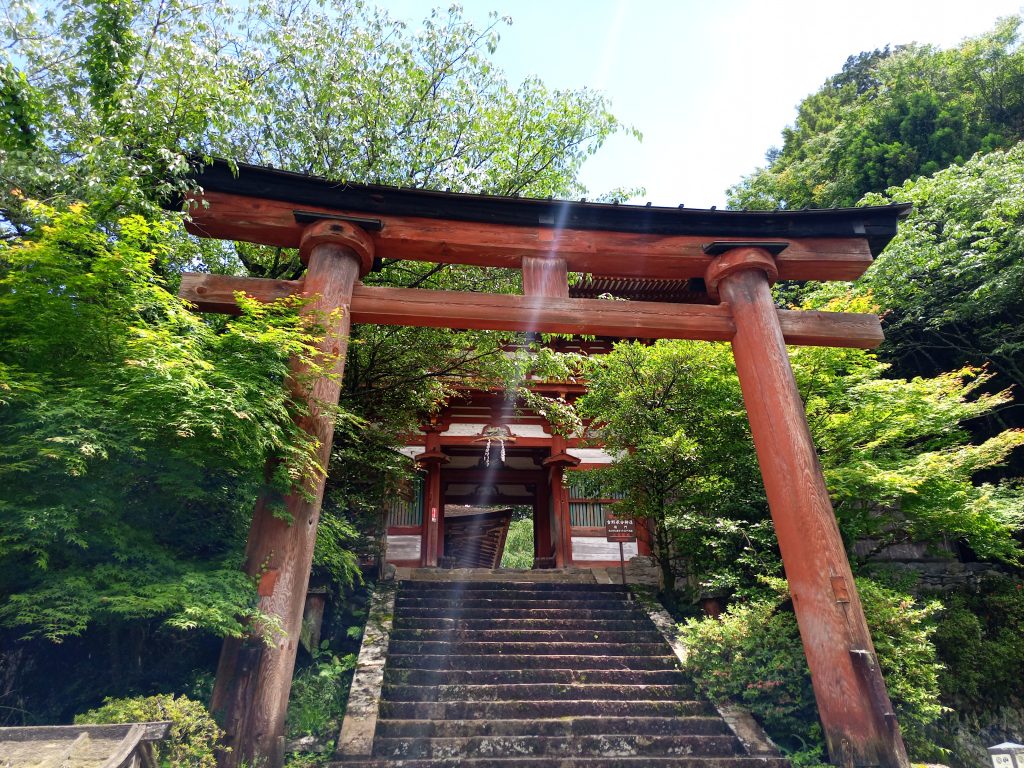
Front entrance of the Yoshino Mikumari Shrine

Yoshinoyama area in the spring.
The Yoshino region has long been revered not only as a sacred landscape where deities dwell, but as a life-giving region of bountiful resources, including the ever-flowing, abundant waters that spring forth from the mountainsides. It is the waters of Nara’s mountains that fueled the rise of Japanese civilization in areas like the Nara Basin, with its vast expanses of rice fields and ancient capital cities. As surrounding populations expanded, shrines were constructed over the centuries to worship the deities of these mountains who were believed to have power over water. The Yoshino Mikumari Shrine is thought to be one such place of worship, with the oldest accounts of its existence found in the Nihon-shoki (720 CE) and Japan’s oldest collection of poetry, the Manyo-shu, which is thought to have been compiled sometime in the later half of the 8th century CE.

The approach to the shrine on a cold winter day.
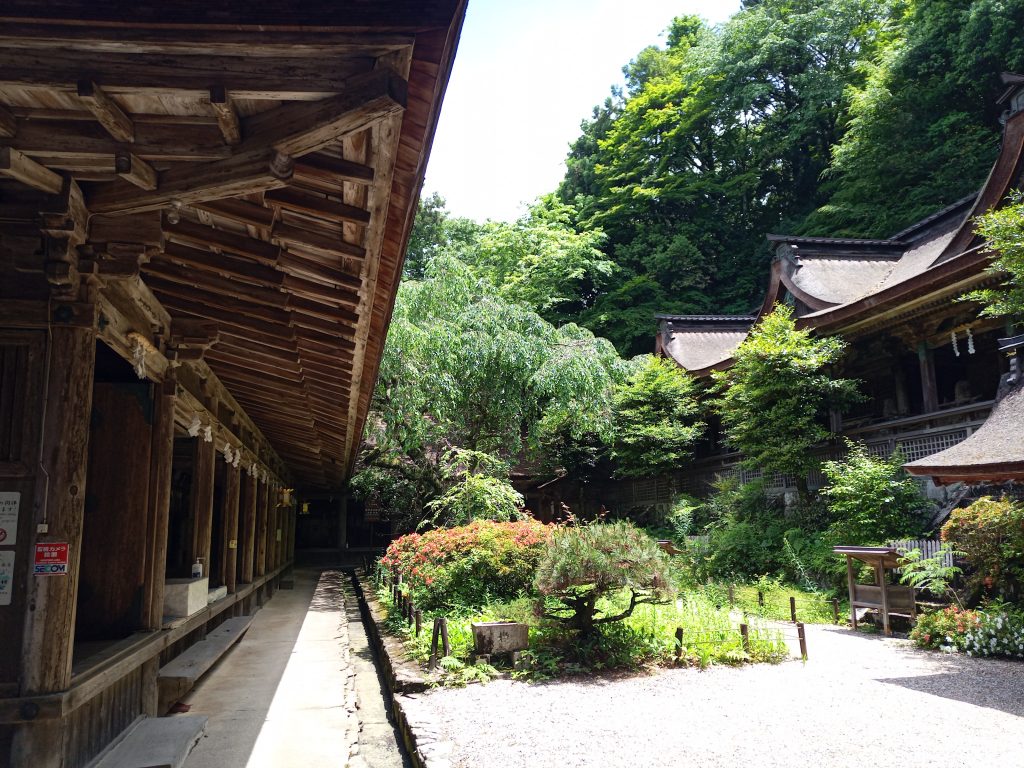
Inside of the shrine. The main hall is on the right and a stage for performances is on the left.
The central deity of the shrine is the Shinto goddess Ameno Mikumari, who is thought to have the power to over fertility, safe childbirth, and to control the distribution of water. This influence over water is actually where the name of the shrine originates from: Miku (水), meaning “water” + mari (分), meaning “divide.” The shrine is also used a place of worship by practitioners of the indigenous religion of Shugendo, whose core tenets involve nature and mountain worship.
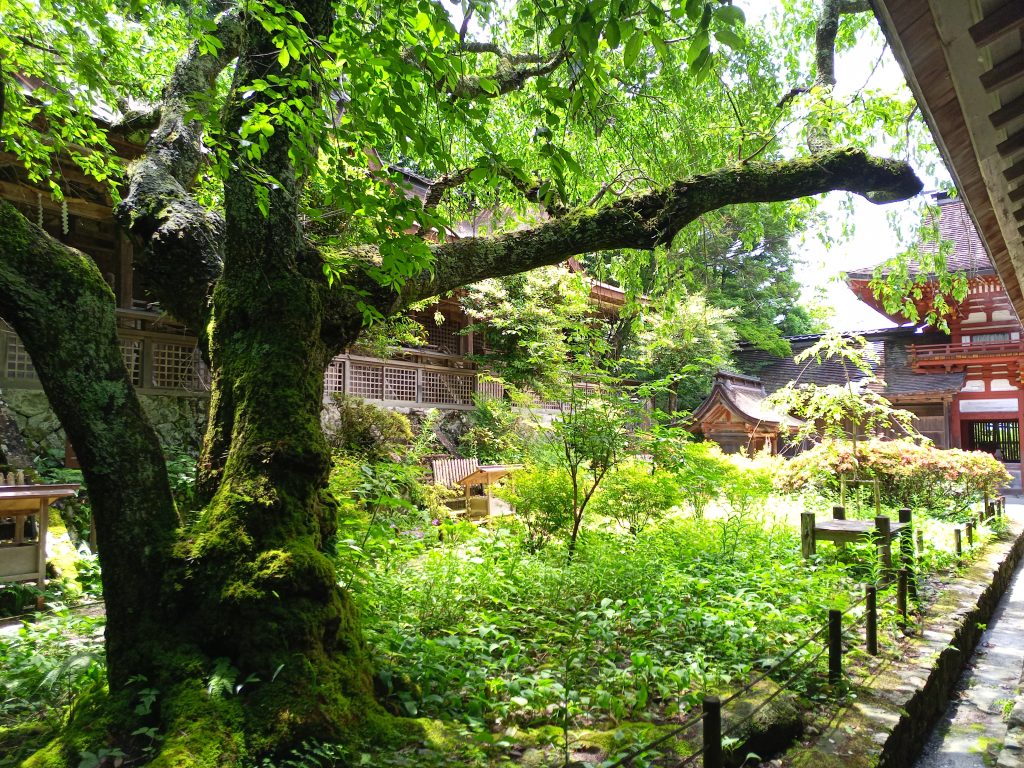
The inside of the shrine also feels wild.
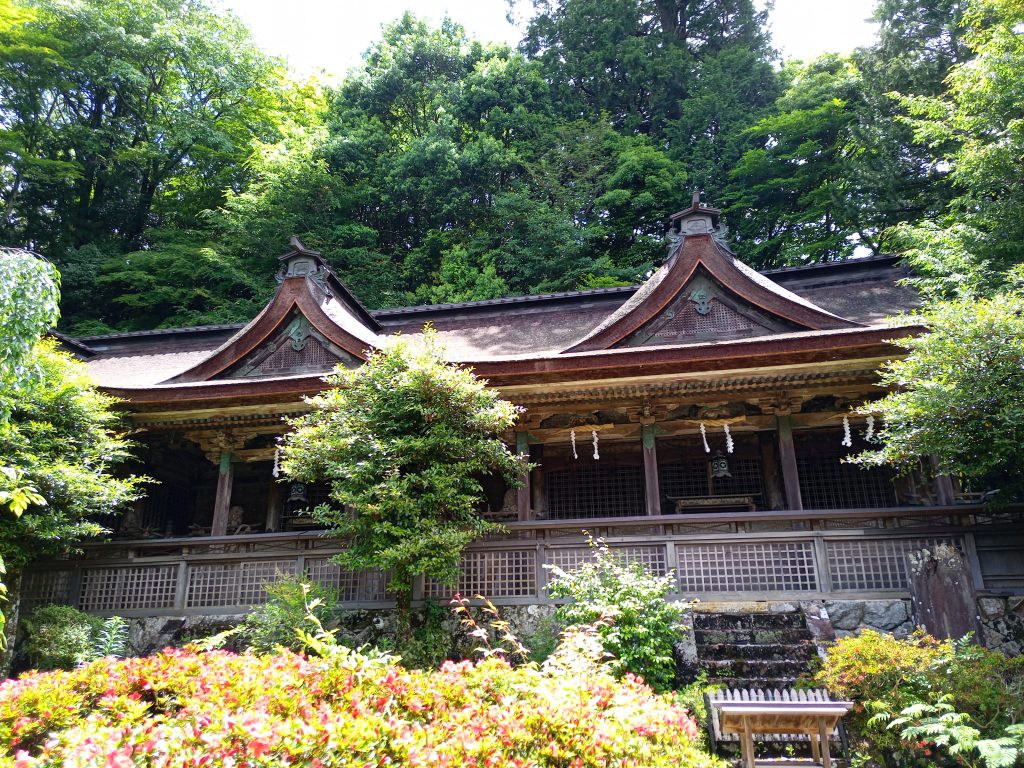
There are also other minor deities enshrined here that are believed to have similar powers to Ameno Mikumari.
The original location of the shrine is thought to have been near the peak of Mt. Aonegamine (now currently the top point of the Yoshinoyama district) from which various river tributaries flower into the mountain valleys below. Now, it is currently located a bit farther down the ridgeline, with the central hall on its southwest side dating back to the year 1604 in its construction. The shrine is rather unusual its design, with an enclosed garden, shrine hall, as well as a wooden stage on which performances can be done. Every April, this shrine is host to a little known religious festival called “Taue” meaning “rice planting,” which is consists of formal prayer rituals and a somewhat playful show put on by actors who tell the story of an old man working his rice field. At the end, rice cakes that have been donated to the shrine are distributed to onlookers, representing a bountiful harvest.
The ultimate purpose of many traditional festivals (known as “matsuri”) in Japan is, to put simply, the maintenance of relations with the divine. Along these lines, the Taue Festival at the Yoshino Mikumari Shrine is done for the entertainment of the deities who are watching from just across the garden; the same deities who are believed to have the power to distribute water to agricultural areas below.
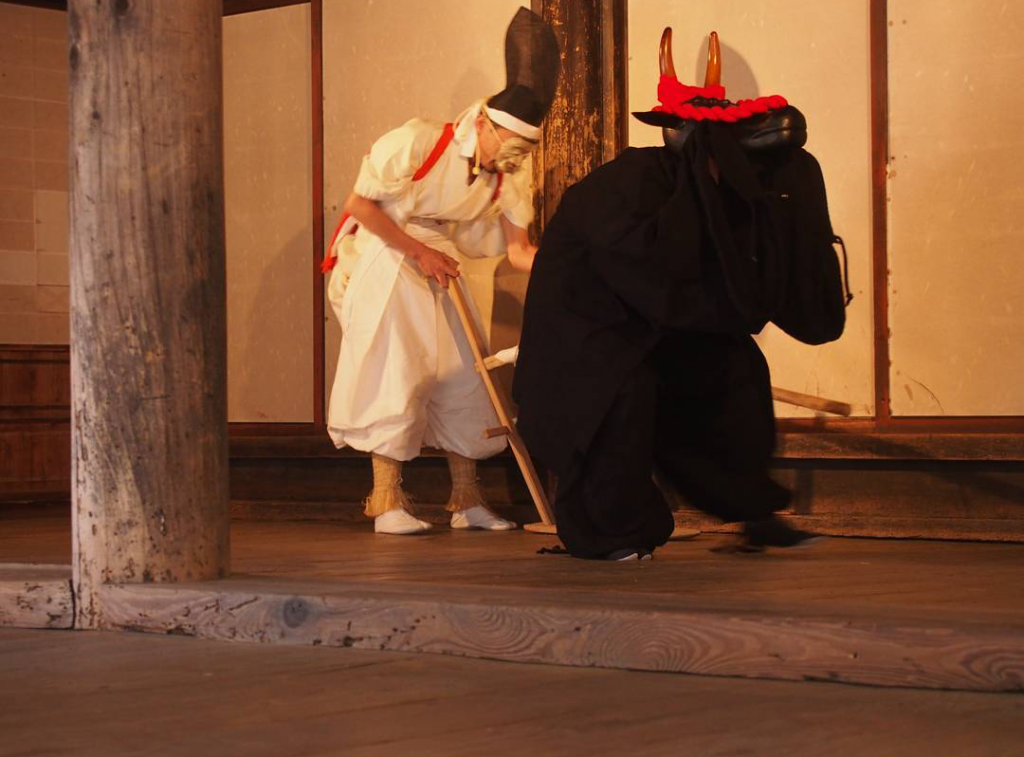
The old man and an ox on stage during the Taue Festival.
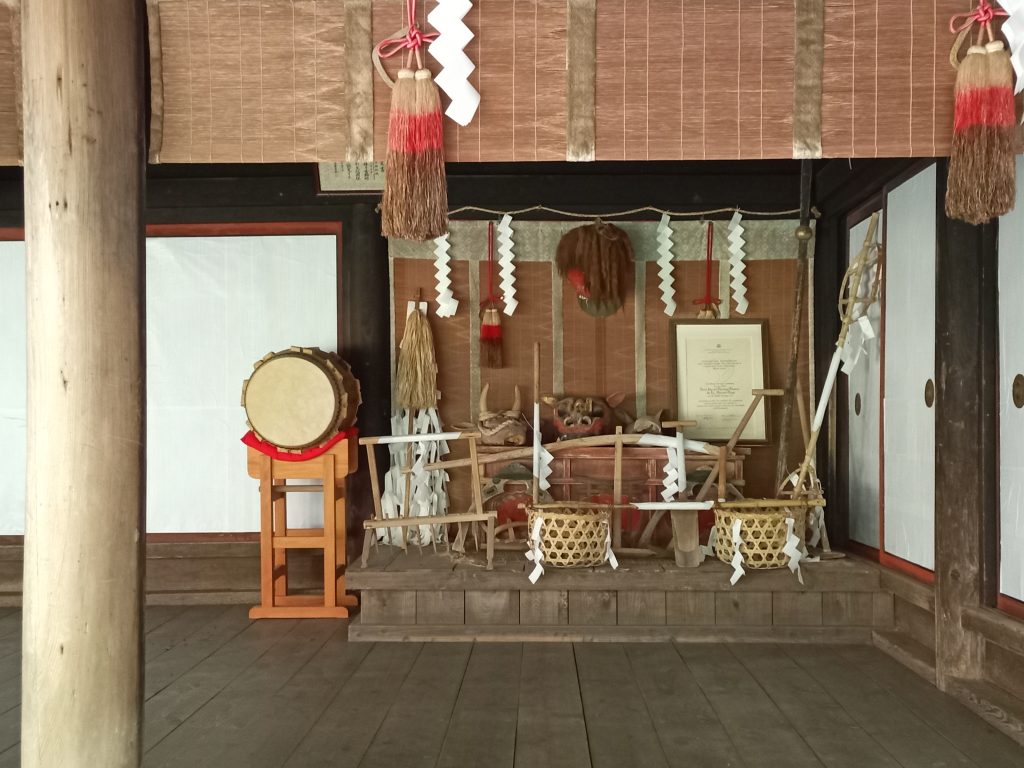
Farming equipment and other items on display at the shrine. The white lightning-shaped pieces of paper designate sacred spaces within the Shinto faith.
This shrine is also famous for being a location that the daimyo Toyotomi Hideyoshi (1537 – 1598) visited to pray for the birth of a son. In fact, Hideyoshi’s son, Toyotomi Hideyori (1593-1615), is said to have been the one who ordered the construction of the the current main hall in 1604 and donated 2 large mikoshi palanquins to the shrine that can still be seen there to this day.
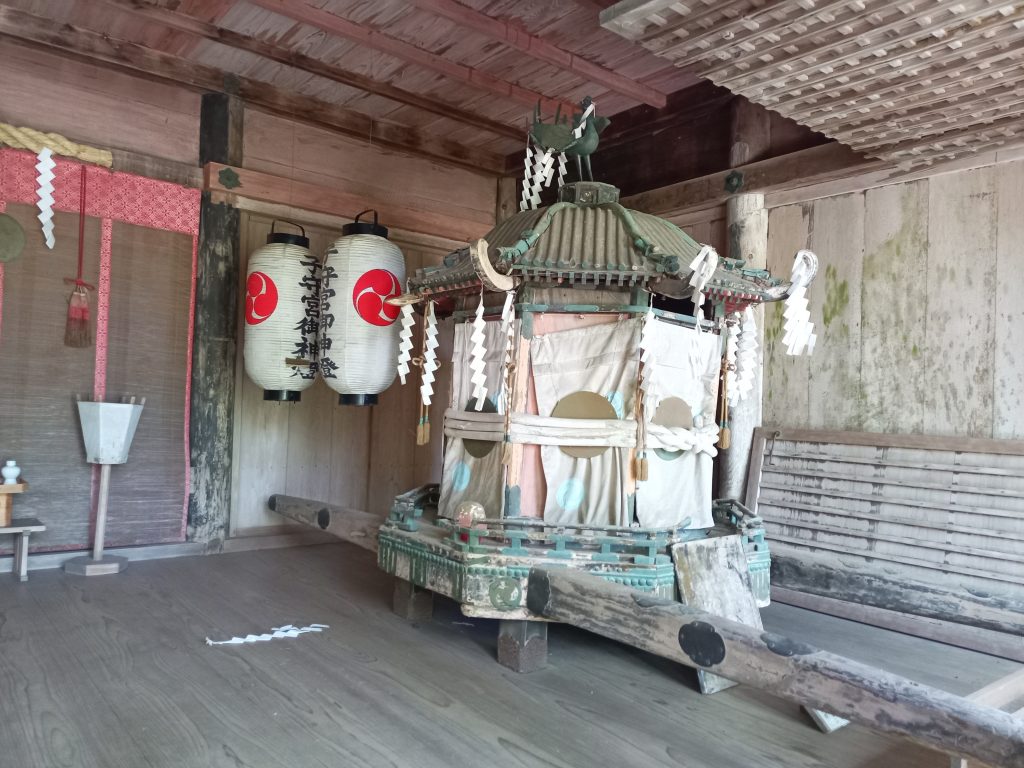
One of the mikoshi donated to the shrine by Toyotomi Hideyori on display.

A cypress wood carving of the famous warrior-turned-poet Saigyo (1118-1190 CE) is also enshrined here. Saigyo is known to have lived for a time in a small hermitage near Mt. Aonegamine in Yoshinoyama, writing about the beauty of the area.

The shrine’s lone sakura tree usually blooms during the first half of April.
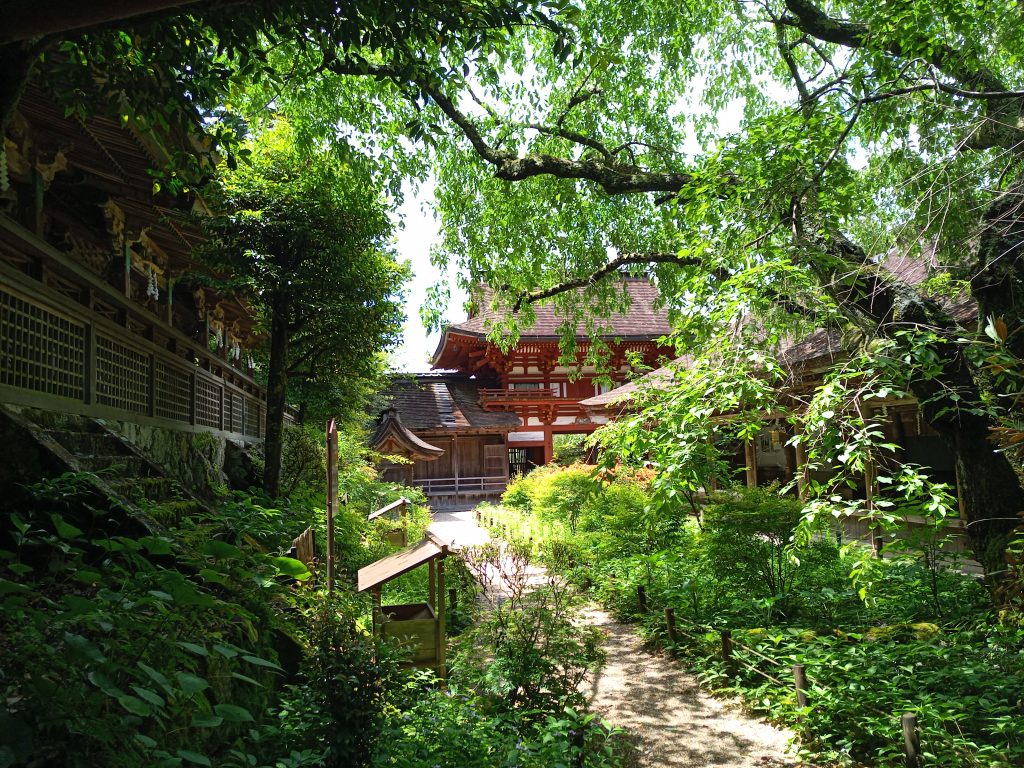
These days, Yoshino Mikumari Shrine mostly seems to be a place of quiet contemplation, almost a another natural feature of the forest that surrounds it. It seems a fitting place for a water goddess of the mountain to dwell.
Access
The Yoshinoyama area can be accessed by train via Kintetsu Yoshino Station. It is about a 4.8KM walk from the station up through the temple district to reach the Yoshino Mikumari Shrine. This is a beautiful hike up a paved road through an ancient temple district, and beyond the shrine you can continue south to other hiking courses and historical sites if you so choose.
If you wish for more information, or are interested in an arranged tour of this area, please contact us anytime at nara-sightseeing.com!

01
FIND YOUR FAVORITE
TRIP ON OUR WEBSITE.
SEND US AN INQUIRY.

02
PERSONALIZE THE TRIP
TO YOUR INTERESTS
WITH OUR CONSULTANT.

03
20% DEPOSIT TO CONFIRM.
BALANCE PRIOR TO ARRIVAL.
PAYMENT BY CC OR TT.

04
WE WILL
MEET YOU
AT THE AIRPORT.

05
DISCOVER THE
TREASURES!